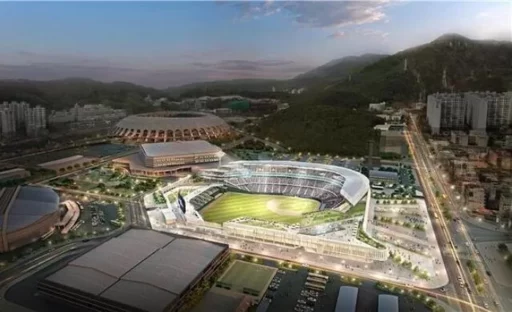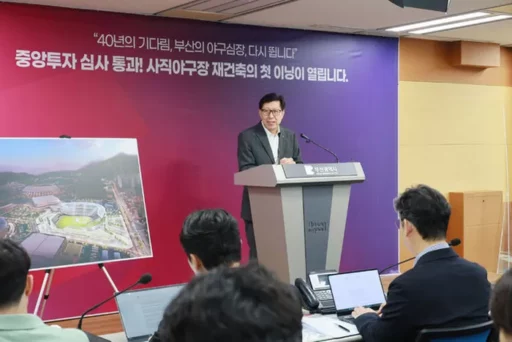Busan Sajik Baseball Stadium to Be Rebuilt as an Open-Air Facility, Not a Dome… Citizens Express Disappointment
The reconstruction project for Sajik Baseball Stadium, promoted by the city of Busan, has officially begun as it passed the central investment review by the Ministry of the Interior and Safety with conditions.
However, voices of disappointment are growing among the citizens of Busan regarding this plan. The reason is that the newly constructed baseball stadium has been decided to be an open-air structure, rather than the "dome stadium" that many citizens had hoped for.

Busan Mayor Park Hyung-jun unveiled the blueprint for the reconstructed Sajik Baseball Stadium during a press conference on the 3rd.
The new stadium is planned to be built with a scale of two underground floors and four above-ground floors, featuring 21,000 seats in an open-air configuration. The total project cost is expected to be 292.4 billion won, with 81.7 billion won coming from Lotte Giants in the form of a private investment letter of intent.
The difference between citizens' desire for a dome stadium and the city's stance
Busan maintains that the construction of a dome stadium would incur excessive maintenance costs and is not a necessary facility given Busan's climate. However, Busan baseball fans have long yearned for a "roofed stadium" due to frequent cancellations during the summer, attendee inconveniences, and the risk of injuries to players.
In particular, compared to modern baseball facilities in other cities such as Incheon’s SSG Landers Field or Gocheok Sky Dome, this decision has been criticized as a "retrogressive choice that hampers the development of Busan baseball."
There are also growing voices arguing that this decision does not align with Busan’s status as a city renowned for baseball excellence.

During the press conference, Mayor Park emphasized the incorporation of cutting-edge smart technology and eco-friendly systems to create a forward-looking baseball stadium.
The plan includes integrating advanced technology such as game data analysis systems, augmented reality (AR) photo zones, and smart landscape lighting to develop a differentiated baseball stadium.
However, concerns have been raised among baseball experts and fans about how effectively these advanced technologies can function in an open-air structure that is fully exposed to the external environment without a dome.
The reconstruction schedule starts with a design competition in 2026, with construction expected to begin in 2028, aiming for completion in March 2031.
During the construction period, the Busan Asiad Main Stadium is to be used as a temporary baseball field. The city of Busan has announced plans to enhance the project's completeness by securing national funding through a contest administered by the Ministry of Culture, Sports and Tourism and by operating an expert advisory group.
Image source: Aerial view of Sajik Baseball Stadium reconstruction / Provided by Busan City.


